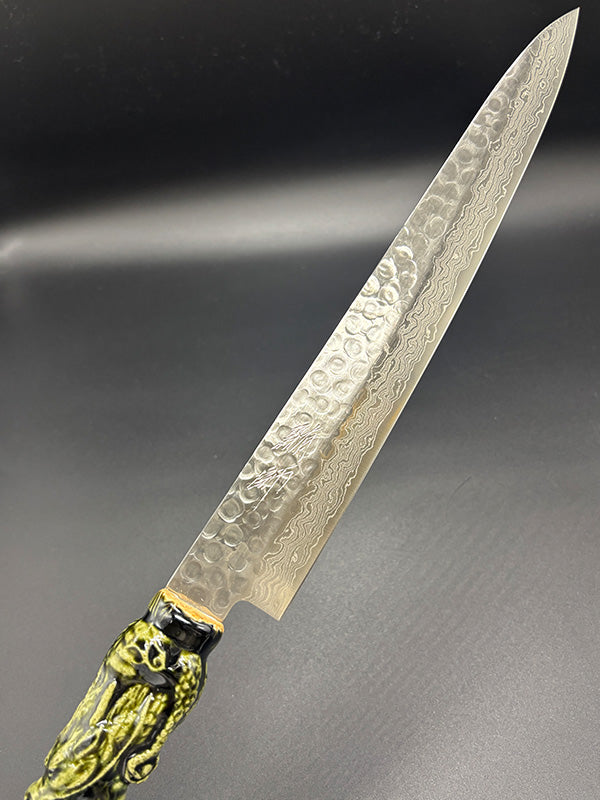
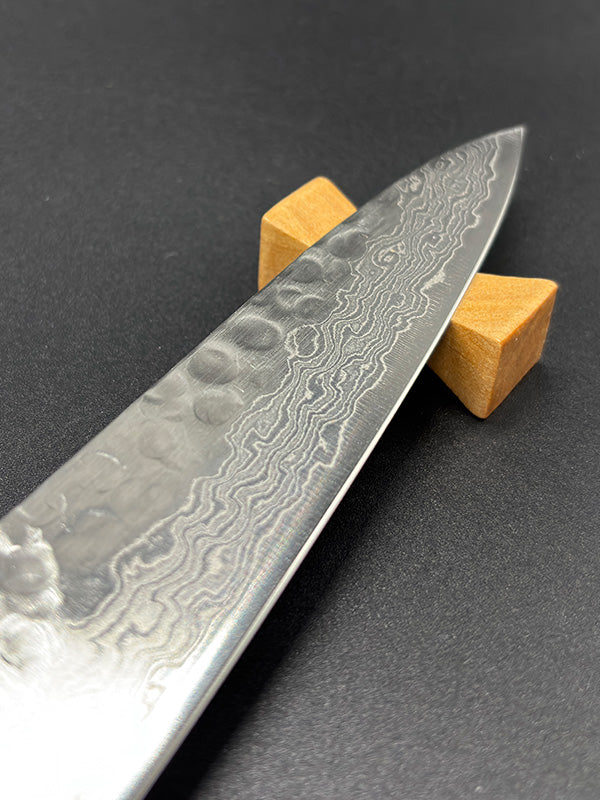
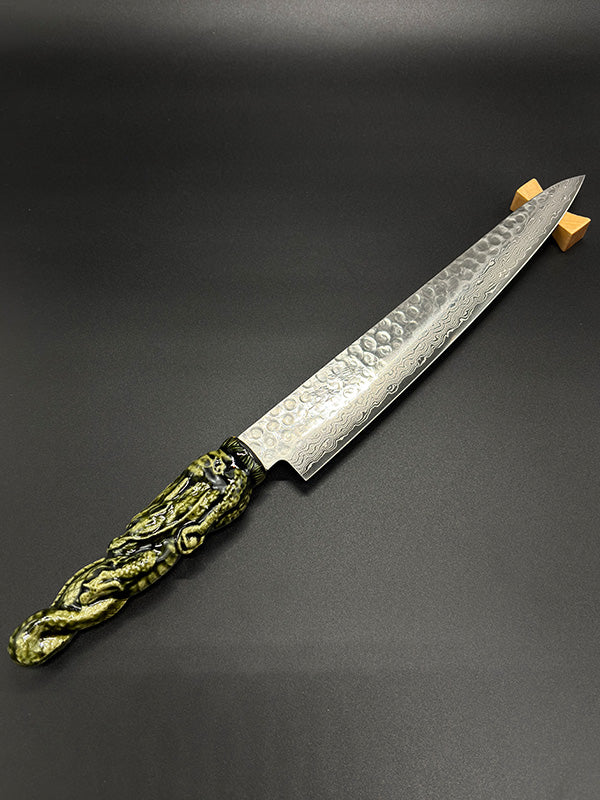
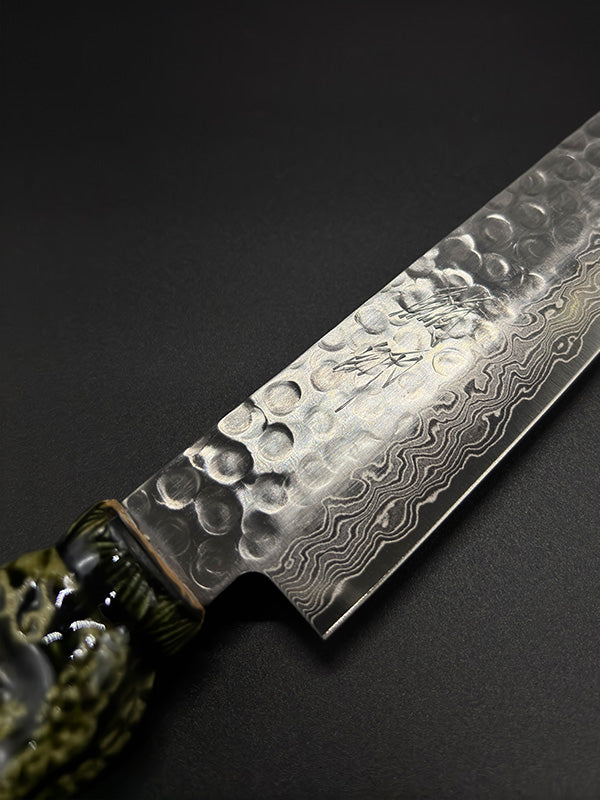
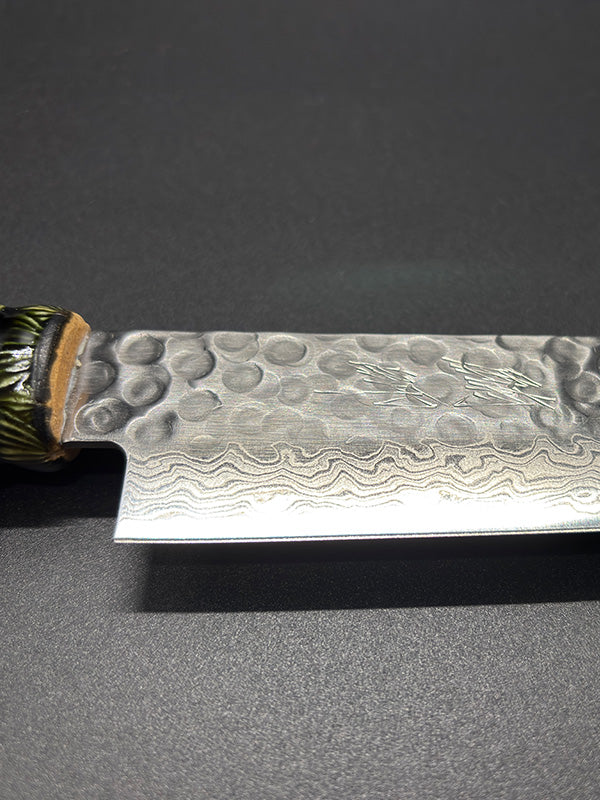
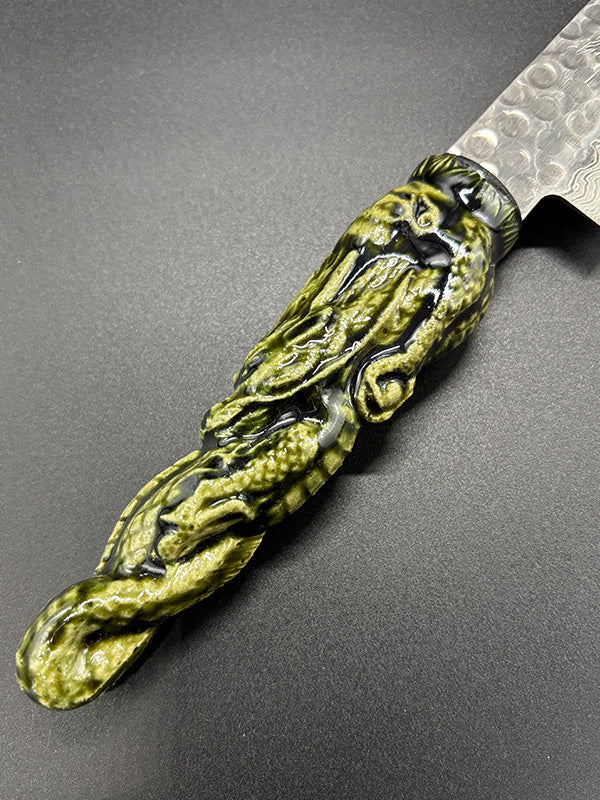
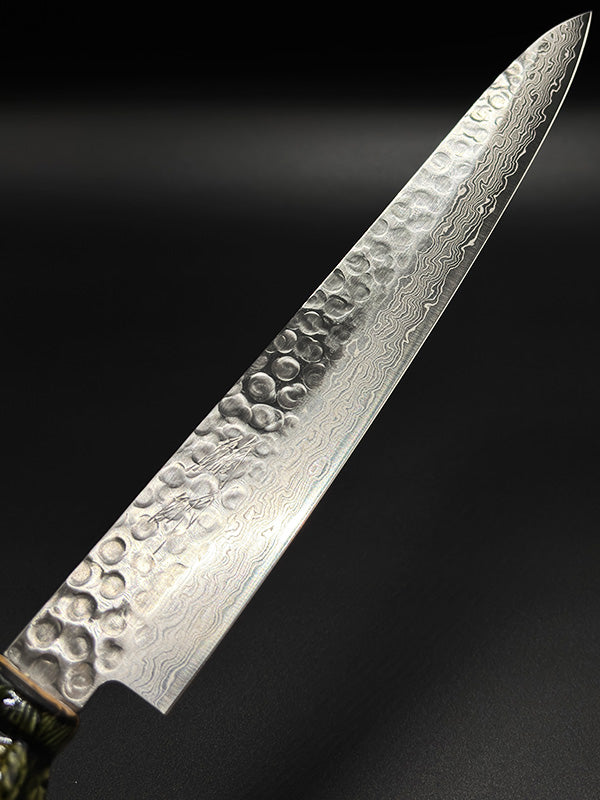
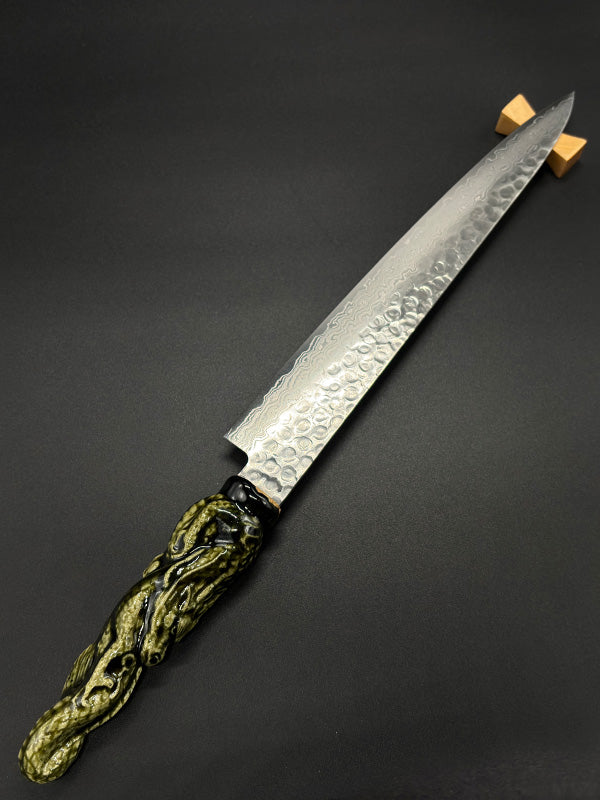
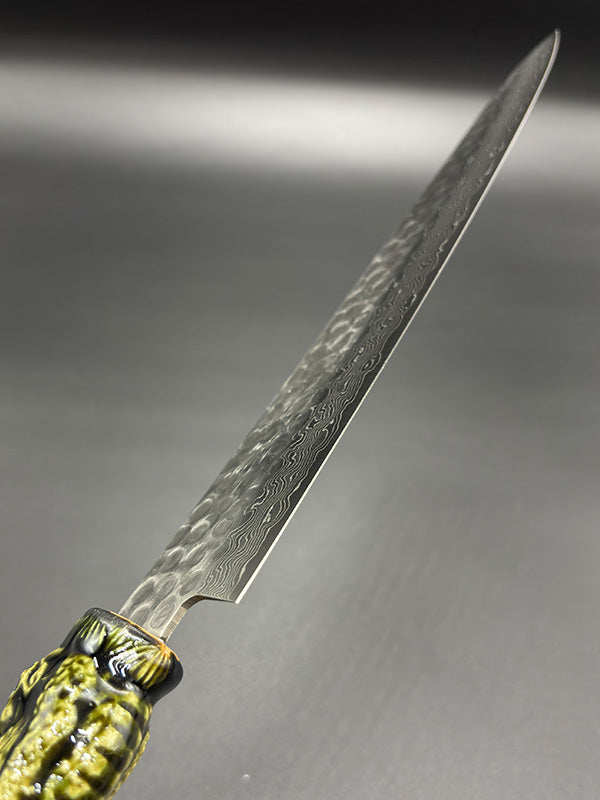
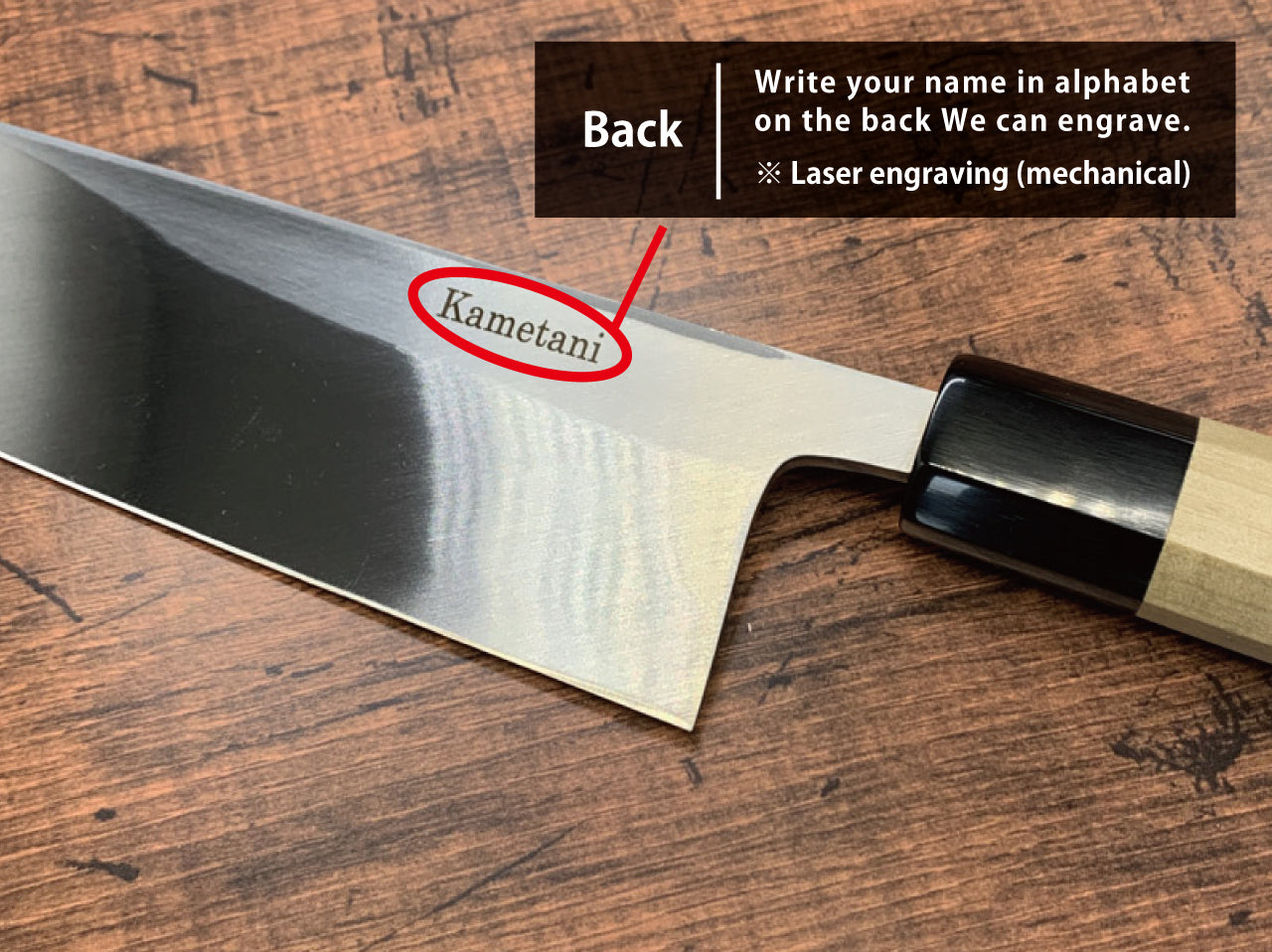
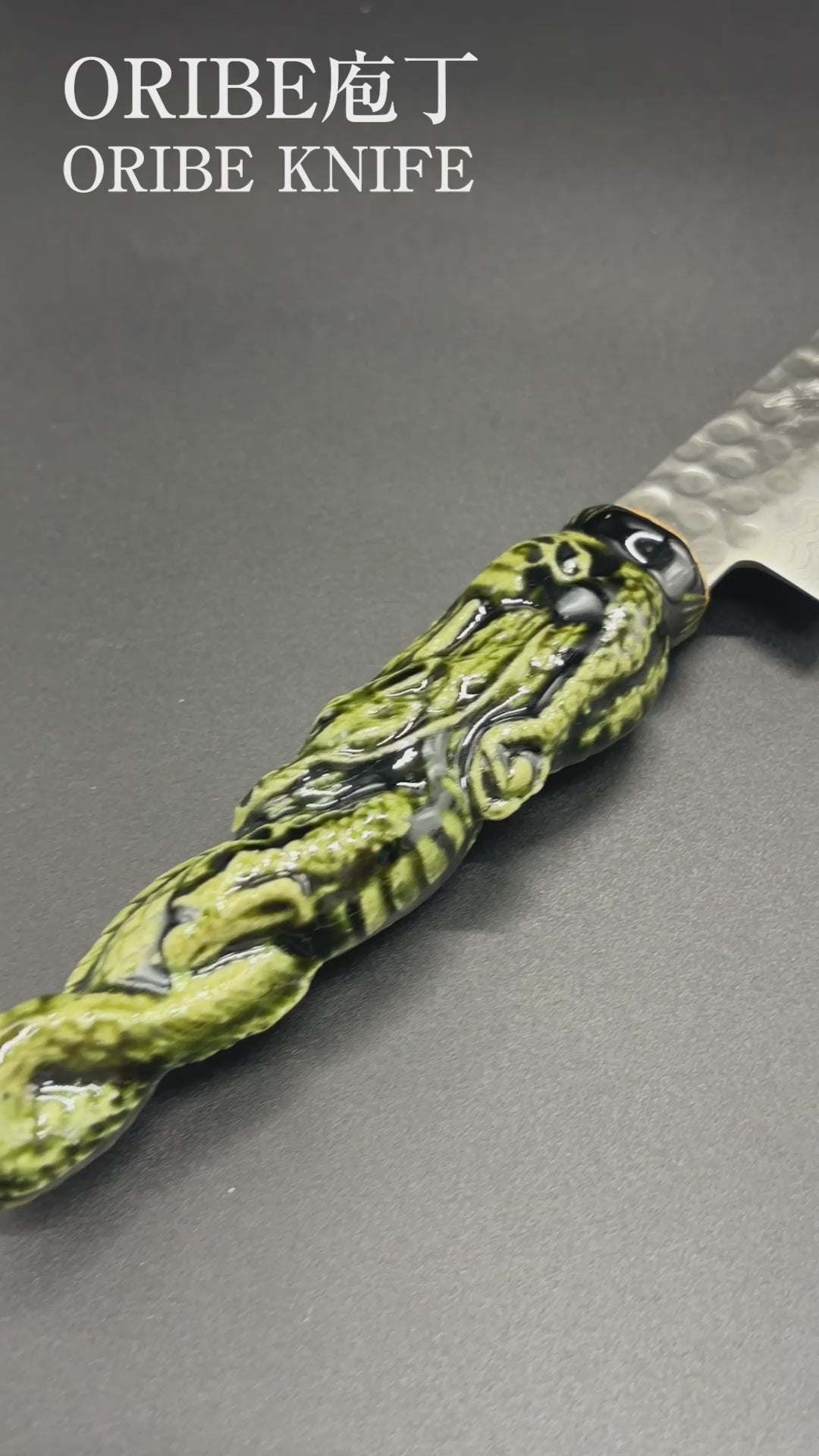
SHIBISI model/Chef Knife|ORIBE庖丁(ORIBE KNIFE)|hammered finish forged damascus wa-sujihiki blade|和筋引240MM (織部焼柄)
*For details on name engraving, please see here.
By utilizing the traditional sharpening craftsmanship of Sakai knives in Japan, we have succeeded in realizing a knife with a sharp and long-lasting functionality. The blade is made of high-quality stainless steel blade steel, which is renowned for its rust-resistant and long-lasting sharpness, and the handle is made of ceramic (Seto ware), which is luxurious and easy to hold, and can be used for a wide range of purposes, such as cutting fish (salmon) and meat.
Japanese knives are in a critical situation where there is a shortage of knife handles due to a shortage of wood materials, as the demand for Japanese-style knives from overseas is increasing. Based on the three axes of design, functionality, and sustainability, while exploring the possibility of new knife handles, we focused on "ceramics," which have not been used much as a material for knife handles until now, and proceeded with the development of knife handles. This was realized through a collaboration of the craftsmanship of "Sakai knives" and "Seto ware." Using the motif of "Tatsu (dragon)," we pursued a fit and ease of grip when held in the hand by utilizing the shape of the pottery.
※As it is made to order, it will take 4-6 weeks for delivery. We will contact you if we need more dates
| Item Number | NSW-240S-OR |
|---|---|
| Shape | wa-sujihiki (和筋引) |
| Steel grade/blade length | 44 layer Damascus + AUS10 240mm |
| Knife handle | Oribe ware(織部焼柄) |
| Tsunoguchi(bolster) | laminated plywood(積層合板) |
| Easy to rust | rust resistant |
◆オススメ用途
Choose options











*For details on name engraving, please see here.
Knife structure

Explanation of kitchen knife terminology
The process of forging solely with steel (carbon steel) is called "Hon-yaki." Furthermore, the blacksmithing process of tempering with water is known as "Mizu-yaki." Mizu-yaki requires advanced techniques and experience, making it only possible for a select group of skilled blacksmiths. These are considered the highest-grade knives.
Fine unevenness is formed by striking the surface of the metal with a special mallet or hammer. This unevenness becomes a beautiful pattern and has a unique texture. Also, by changing the hammering method, density, direction, etc., various variations of patterns can be created.
"Honkasumi" is the most commonly used Japanese knife. Kasumi refers to knives made by combining base metal and steel. Among them, only those made by blacksmiths by sticking base metal and steel without using plywood materials can be called "Honkasumi". As a basic, "white octagonal pattern" is attached.
It is a kitchen knife made by layering different steel materials. Since multiple materials are used, the merit is that many of them have high hardness and durability, and are excellent in sharpness. It is characterized by a wave-like pattern on the surface of the blade, and you can also enjoy the beauty of the appearance.
This is a technique that polishes the surface of metals and other materials to give them a mirror-like luster. Along with the beautiful appearance, it also leads to improved sharpness and durability.
Typical high-grade cutlery steel used for Japanese knives. It is difficult to handle and depends on the skill of the craftsman, but if handled by a skilled blacksmith, it can be sharply sharpened, has moderate stickiness, can be cut for a long time, and can be finished as a high-quality knife that is easy to sharpen.
By hitting the metal material with a special mallet or hammer, fine unevenness is added to the surface. This unevenness creates a beautiful pattern and is characterized by its unique texture.
The pattern on the knife resembles the pattern created when ink is dropped and mixed in water, hence it is called a "Suminagashi" knife. The Suminagashi knives that we handle on our site are made of a main steel (such as Yasuki Blue #1 steel) combined with laminated soft iron.
It is one of the methods of quenching knives, in which water is used to cool the heated knives. It rapidly lowers the temperature of the metal compared to "oil grilling" that uses oil. Sudden temperature changes often cause distortion and cracking, which tests the skill of the craftsman.
"A type of very high quality steel that is said to have been produced in the ancient Syrian city of Damascus. Generally, it is often used for forged swords and cutlery, and is characterized by beautiful patterns.
The manufacturing method of Damascus steel requires extremely advanced technology, and multiple different types of iron and steel are layered and forged to create a dense and strong steel."
High-grade stainless cutlery steel with added chromium, molybdenum, vanadium, etc. to improve hardness and wear resistance. Because it is a material with a large amount of carbon, it can be hardened by proper quenching, and has a sharp edge and is more resistant to rust than general stainless steel.